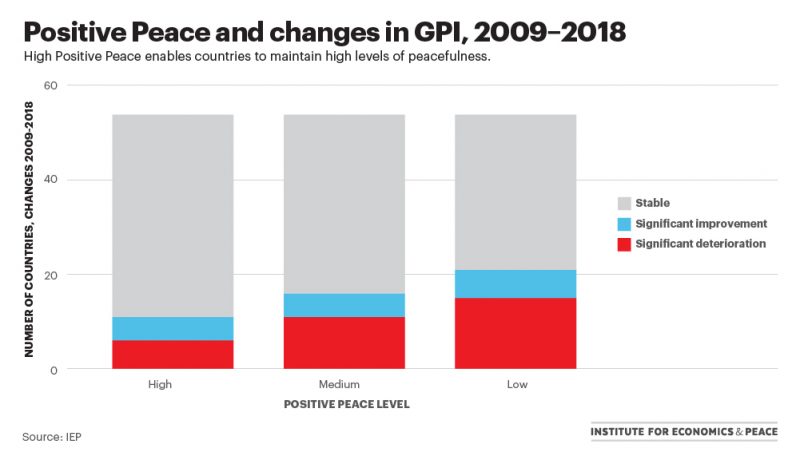The Positive Peace Framework provides a way to assess a country’s ability to adapt to unpredictable economic, social and environmental shocks.
Countries with high levels of Positive Peace are by far the most stable, with only 11 per cent experiencing a deterioration of greater than 0.1 in the Global Peace Index Internal Peace score compared to 28 per cent for the group with low levels of peace.

Positive Peace provides a framework for assessing a country’s level of resilience. It can be used as a proxy for a country’s ability to plan, absorb and respond to shocks.
A key reason for this is the mutually reinforcing nature of the societal structures underpinning the eight Positive Peace pillars.
For instance, when a country has strong formal institutions, such as a well-functioning legal system, in combination with strong informal institutions, such as cohesive communities, it will tend to respond or adapt to specific shocks more effectively.
The term ‘shock’ is used to describe a sudden change in some aspect of a system.
In terms of a nation, shocks are sudden onset events that have the potential to “cause significant fatalities, injuries, property damage, infrastructure damage, agricultural loss, damage to the environment, interruption of business, or other types of harm or loss.”
Examples may be tsunamis, hurricanes, drought, earthquakes, civil war, violent changes of political power or epidemics.
Shocks can be catastrophic events that directly cause loss of life or events that trigger the outbreak of violence. Some shocks can be positive events, such as peace negotiations, the introduction of a new technology or the discovery of a new mineral resource deposit.